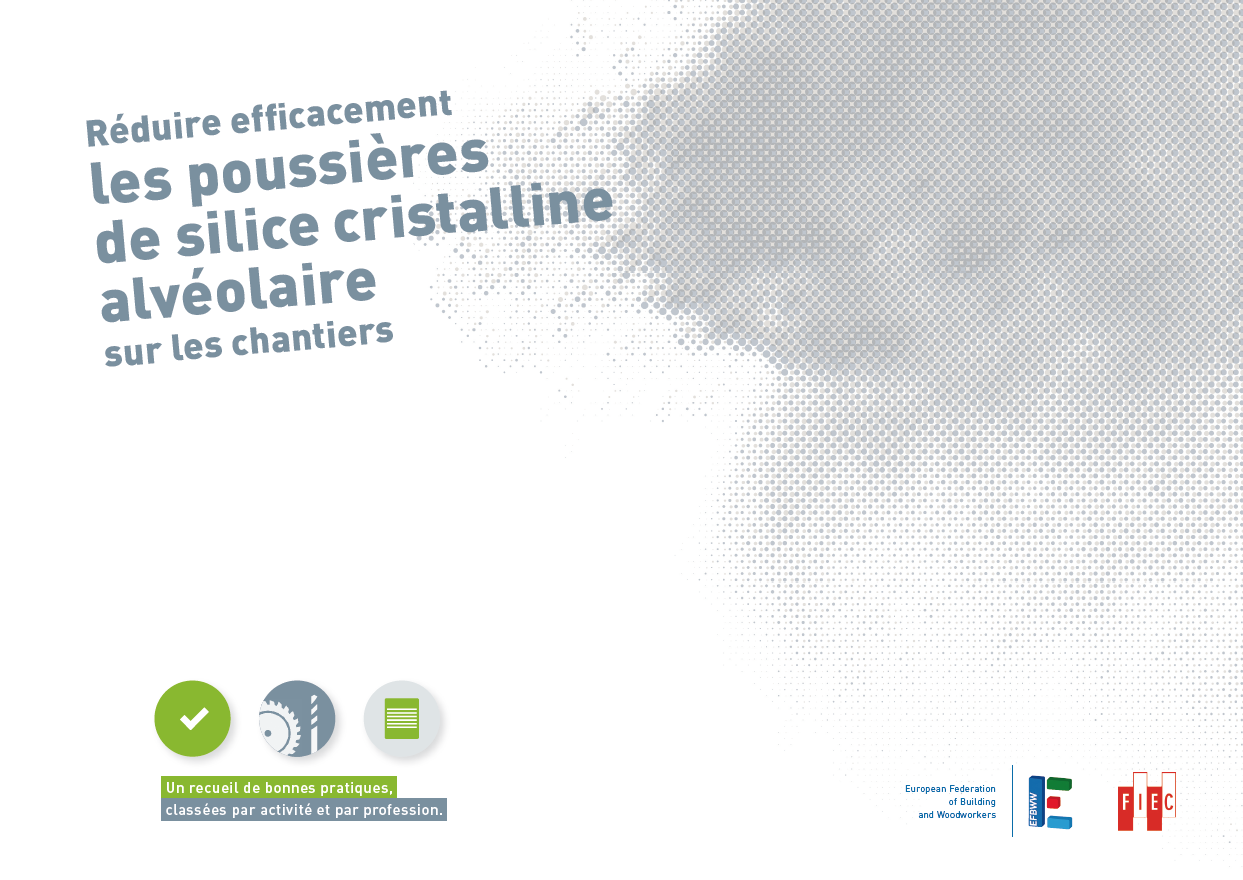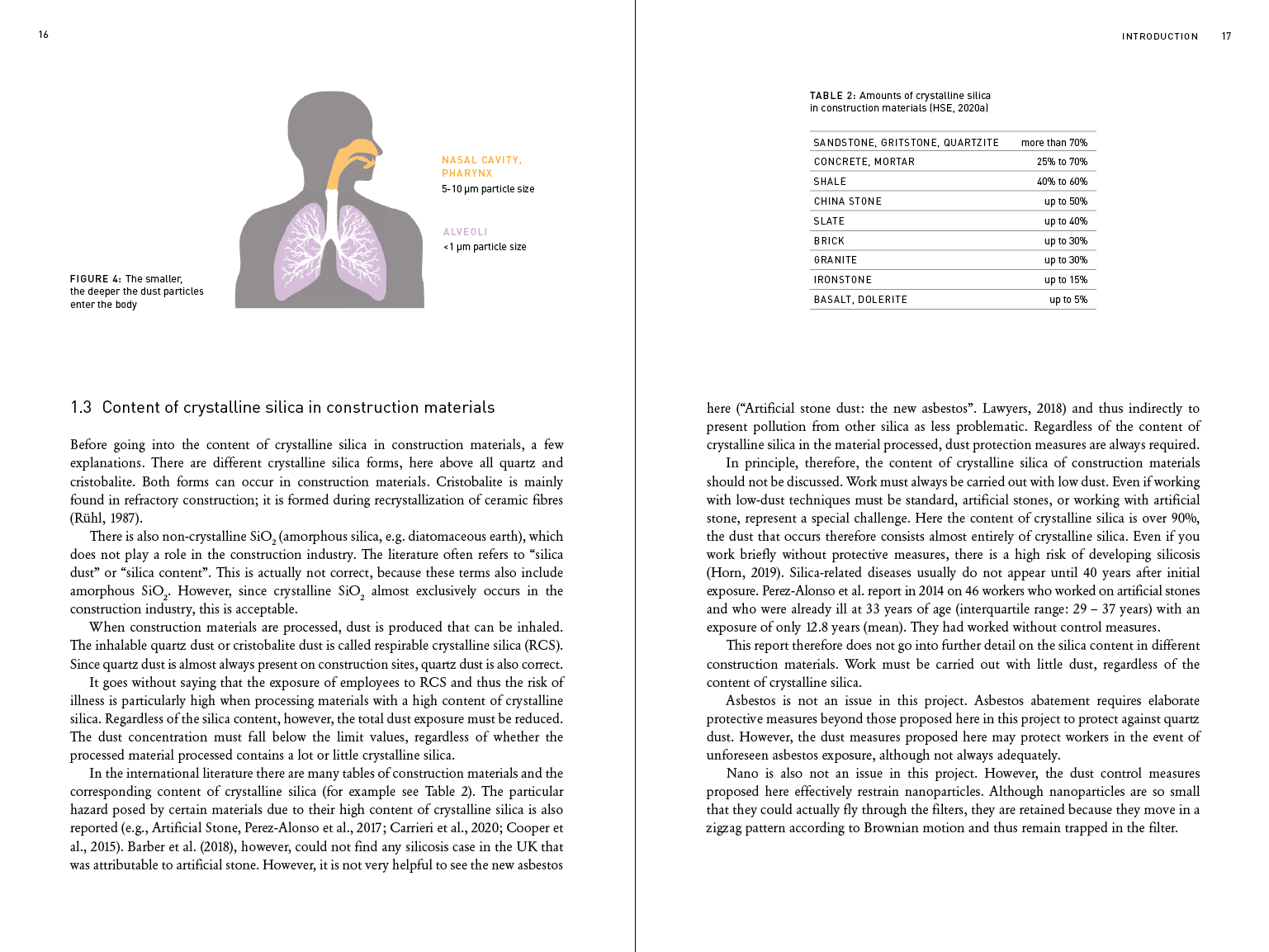Reducing Respirable Crystalline Silica effectively on construction sites
Mapping
Clients:
EFBWW, European Federation of Building and Woodworkers
FIEC, European Construction Industry Federation AISBL
Brussels, January 2022
Published in Croatian, Czech, English, French, German, Italian, Latvian, Polish, Portuguese, Romanian, Spanish, Turkish
Design, layout, illustration
Dust is the permanent companion of all construction workers and dust is in principle a health threat. Some kinds of dust have disastrous health effects – like respirable crystalline silica (RCS) dust.
The current European exposure limit value of 0.1 mg /m³ shall protect workers from negative health effects. Having an exposure limit value is one thing, making it a common practice is another thing. This mapping gives advice on how to reach the limit value for many specific construction activities each with its specific conditions of exposure and related prevention measures.
Reducing Respirable Crystalline Silica effectively
on construction sites
Report
CLR Studies/European Institute for Construction Labour Research, Brussels 2022











